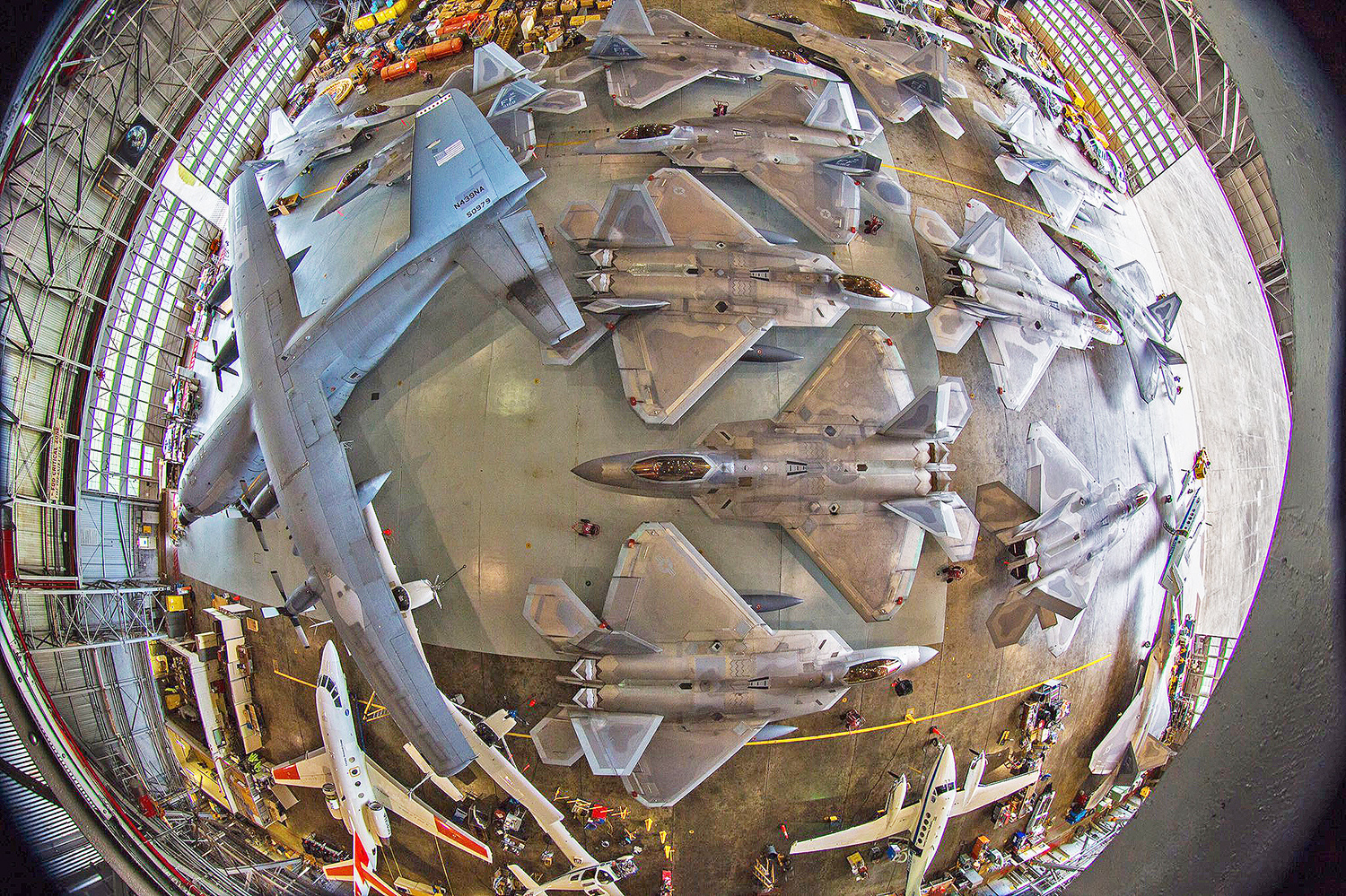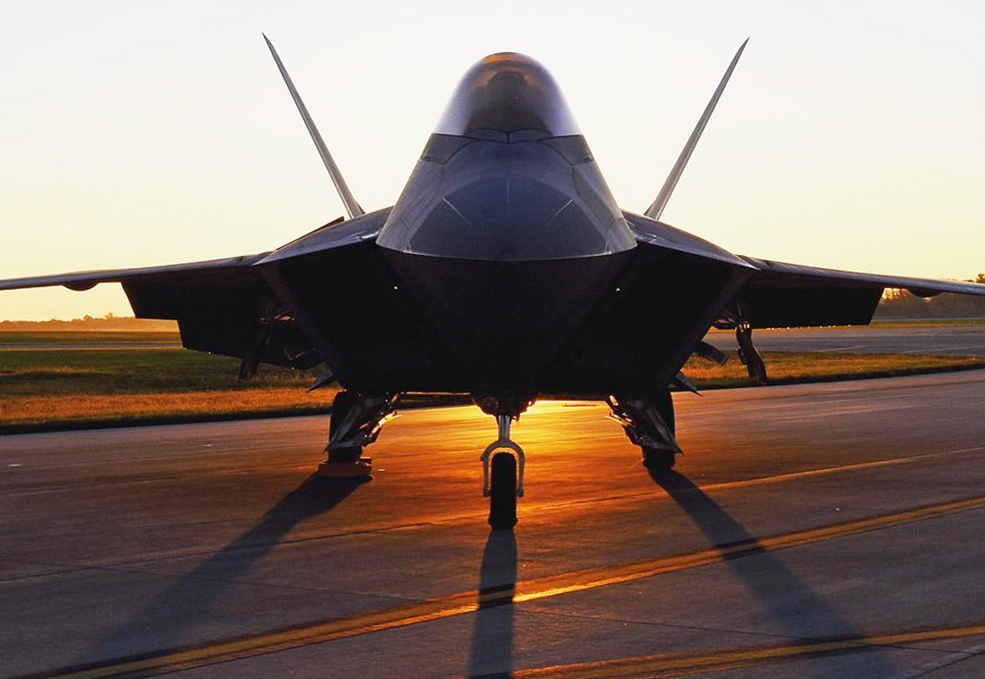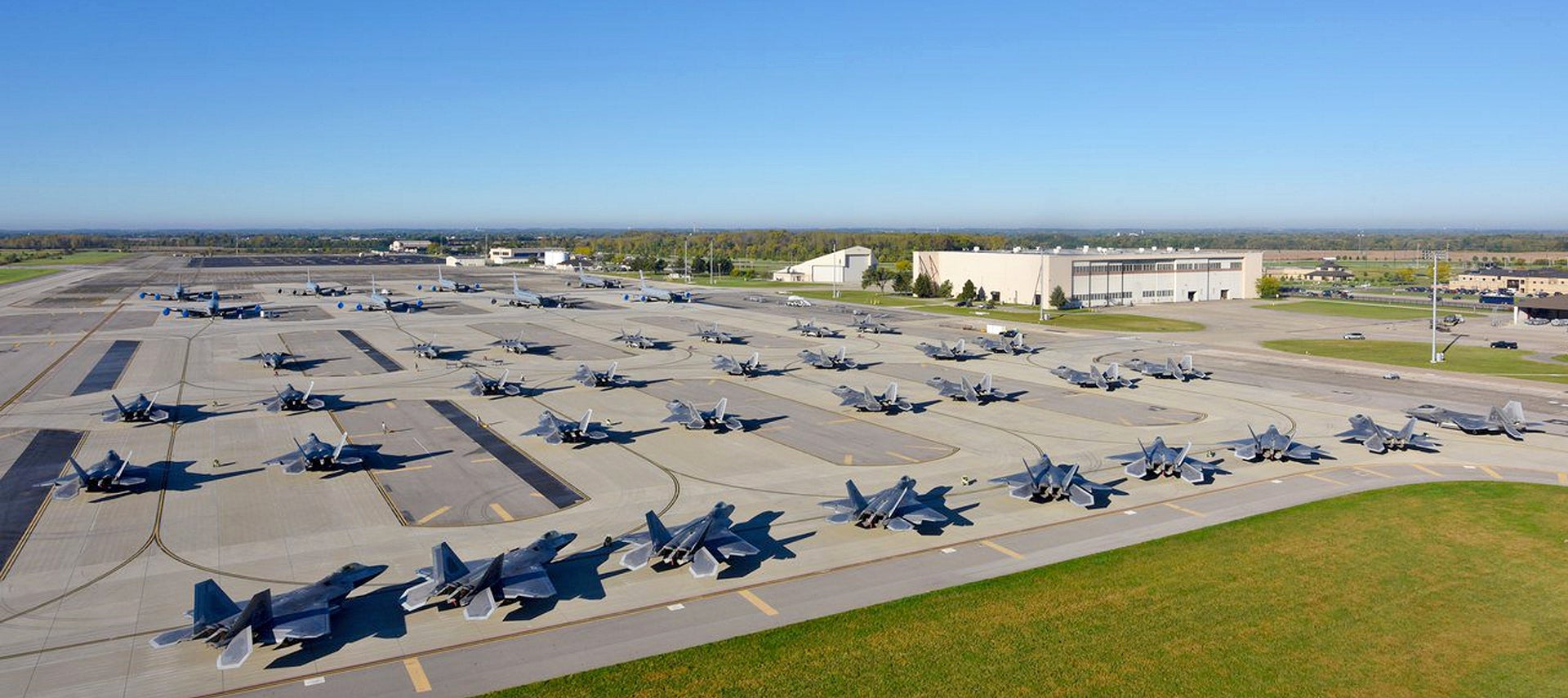As Hurricane Matthew’s predicted path narrowed, it was clear that military aircraft and vessels based up and down the southeastern seaboard of the United States needed to run for their lives. Ships were sent to sea and aircraft began large scale migrations to safer territory. Langley AFB’s 1st Fighter Wing was no different, and the majority of their incredibly valuable fleet of 48 F-22 Raptors were quickly made ready for such a mission, dubbed Hurrevac (hurricane evacuation).
Thirty-two of the wing’s jets flew to Rickenbacker Air National Guard Base in Columbus, Ohio to find safe haven from Matthew’s brunt. Rickenbacker’s own KC-135R tankers provided support for the 1st Fighter Wing’s armada of Raptors. Although Columbus is only around 400 miles from Hampton, Virginia—well within the F-22’s range—support equipment and personnel had to accompany the stealth fighters to their temporary home.
Hurrevac missions are historically not rare, but over the last decade hurricane activity has been minimal. This season, that appears to be changing. Just a month ago, the picture below went viral, showing 13 1st Fighter Wing F-22s stuffed inside the giant hangar at NASA’s Langley Research Center in preparation for Hurricane Hermine.

Although dropping everything to evacuate for a hurricane is a major disruption for any military unit, doing so also serves as a good drill, sharpening airman’s skills on how to pack up and ship out on short notice. The F-22 community in particular, which represents the tip of the USAF’s spear, is tasked with rapidly responding to a whole slew of contingencies around the globe. Although the Rapid Raptor concepthas been built around moving smaller numbers of Raptors around the globe at the drop of a hat, larger snap deployments are certainly possible—especially considering the rising tensions around the world.
Just last February, a gaggle of F-22s showed up in Japan without notice in a massive show of force, and as the Raptor’s reputation continues to rise, the demand for its presence around the world will, as well. Not only that, but there are only about 125 F-22s that are combat-coded. Combine this with a mission-capable rate between 65 and 75 percent, and the number of Raptors actually ready for combat at any given time is fairly miniscule. So moving larger numbers of Raptors to a crisis zone quickly will be imperative when it comes to getting the most combat punch out of the relatively tiny fleet.

Contact the author: Tyler@thedrive.com
